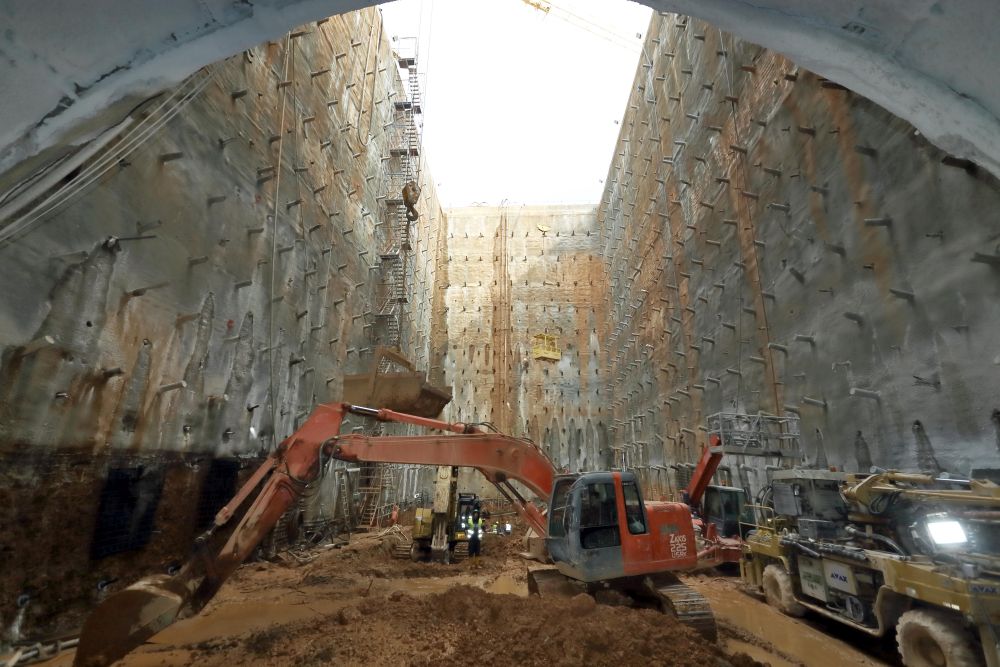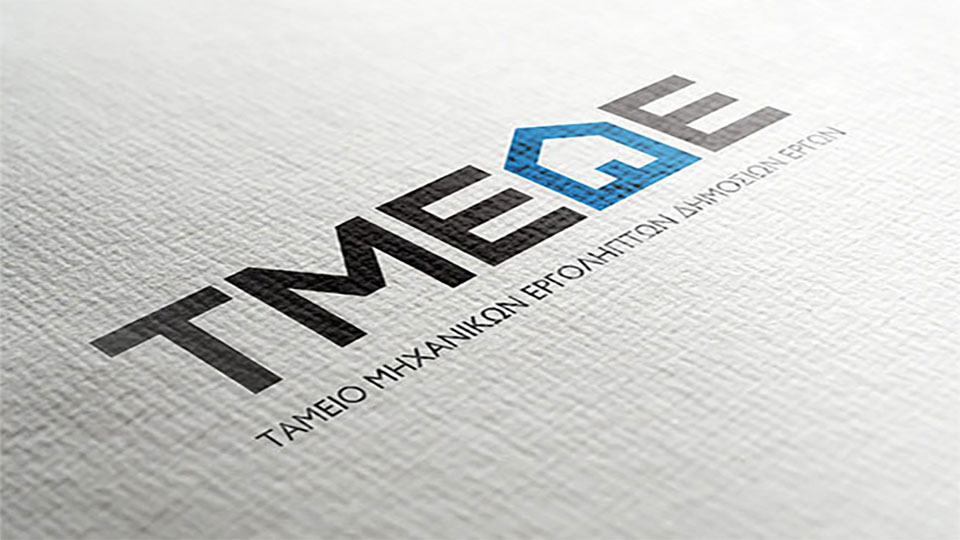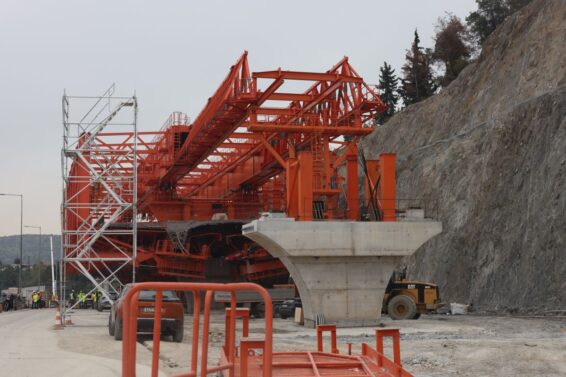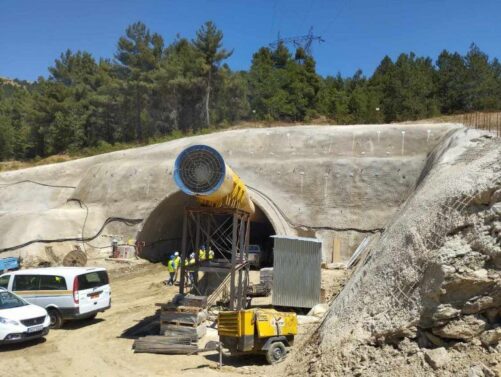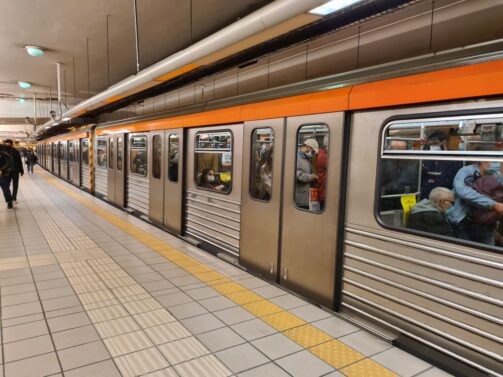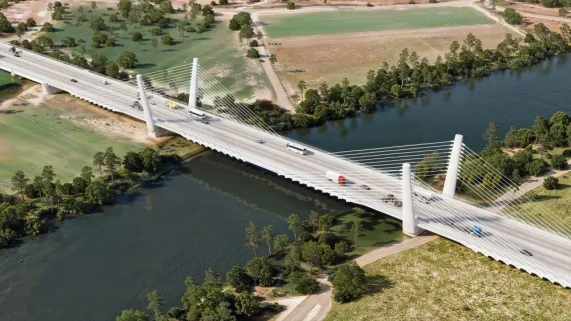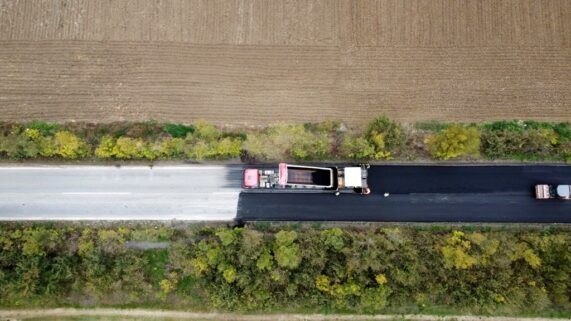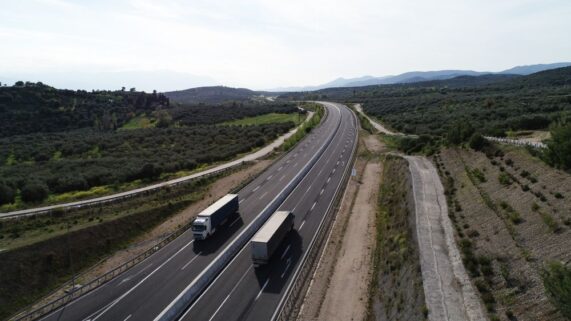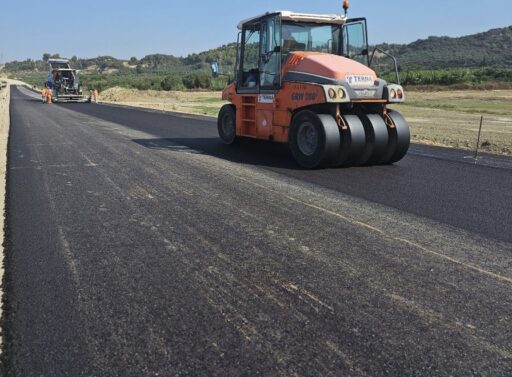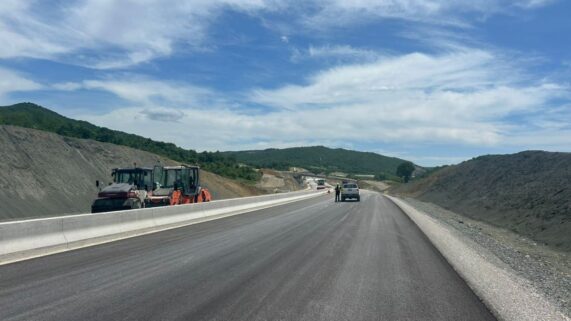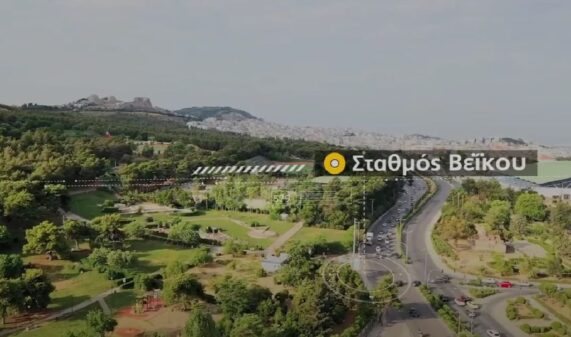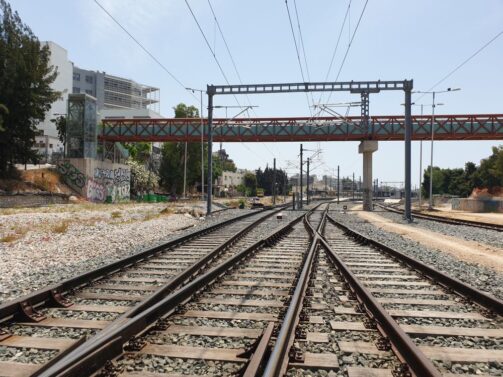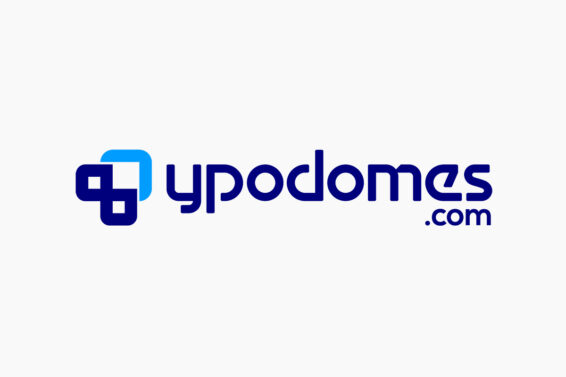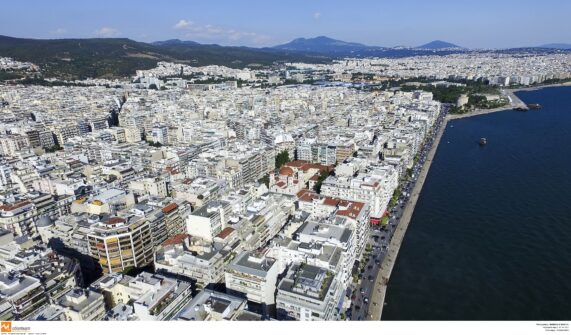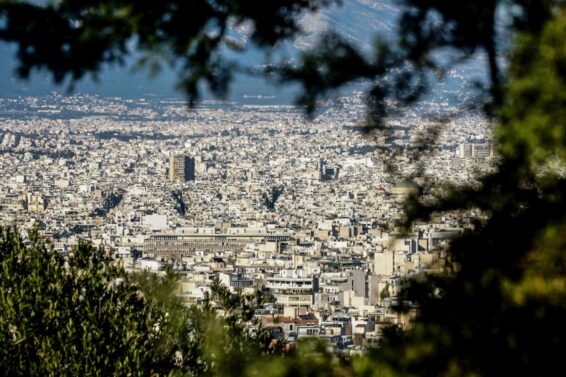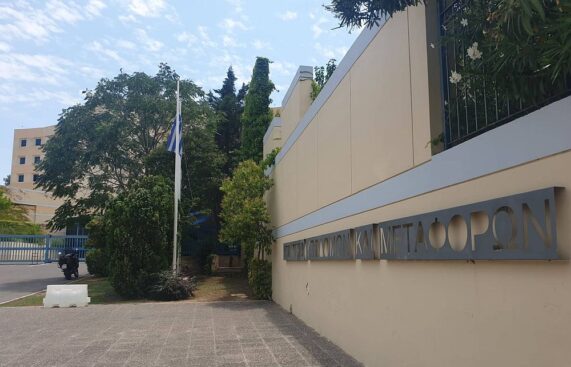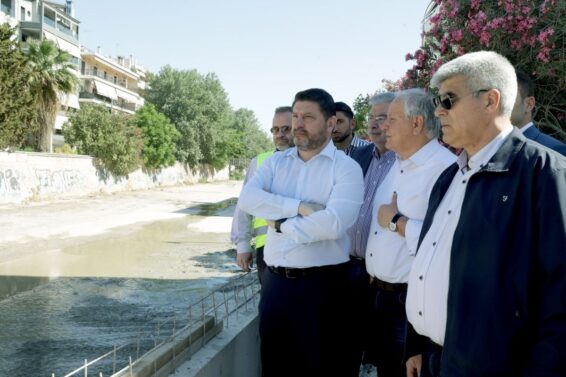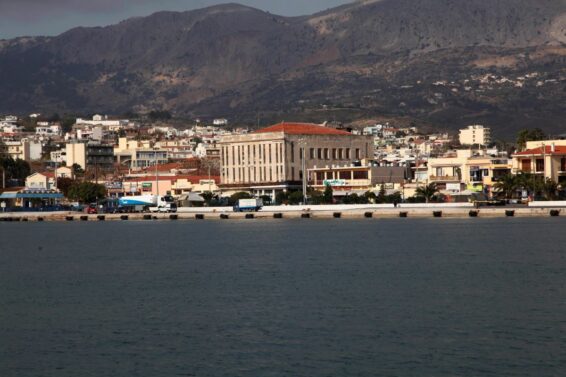By Easter, the first of the two TBMs of the new Line 4 of the Metro is expected to start its journey in the Athenian underground. ypodomes.com visited the “Katehaki” construction site where the work to receive the large machine is intensive.
With two shifts on a seven-day basis, the so-called “shaft” is being prepared, which is nothing more than the trench into which the largest part of the TBM will go, and at a depth of 40 meters underground, the remaining part will be assembled in order to be put into operation in about 2 months from today.
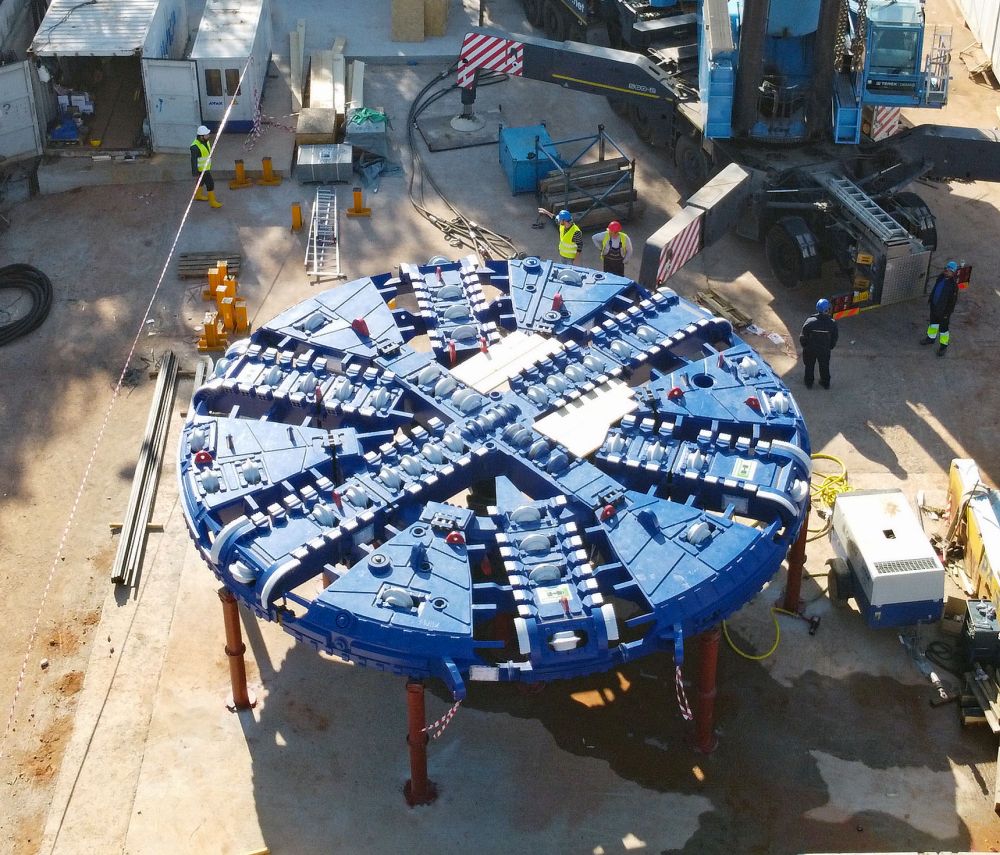
TBM made in Germany
The first excavations of the well began exactly one year ago, in February 2022. At the end of summer the first TBM, new and made in Germany, started its journey to Athens in pieces.
Then all the parts arrived at the Katehaki construction site and the assembly process began. Completing the first well, the work of preparing the entrance of the TBM is carried out, the head and rear shield are glued.
This is a TBM specially designed for an urban environment. Proceeding into the Athenian underground at an average of 13.5 meters per day (which may exceed 20 meters under conditions), it will leave behind a ready-made tunnel.
With technology on its side it is a very stable machine which does not create ground movements as they are now measured in millimeters. The machine makes a full-face cut, that is, it cuts 70 square meters by one and a half meters, which is about 200 tons of material depending on its specific weight, that is, 120 cubic meters per hour. It digs at high speeds, which is the purpose and with less disturbance and with its main characteristic being that it will be almost “silent”.
The subsoil is basically two-layered Athenian slate, upper and lower. The upper level is the one that usually exists in Athens, it is stable soil, it does not have much water, it has some quartz media, which, however, does not affect the drilling. In the lower section it has more quartz but the machine has no problem, it only struggles when it finds a big rock. It allows the water to escape. It isolates the excavation chamber from the rest of the machine, so it does not create a pressurized environment.
Then all this material will come out of the tunnel with conveyor belts along the entire length so that the flow of material is unstoppable. One strip at the end will be 5 and the other 7 km and they will meet at Evangelismos. He throws it into special basins and from there it is discarded. The tape system is a challenge in itself because it has certain degrees that the inclined tapes must lift. One exit will be at the Katehaki construction site and the other at the Veikou construction site.

At Goudi within 2023
According to the sources of the consortium, the journey of the first TBM will start with low speeds at the beginning and gradually it will speed up. Within 2023 it is planned to reach the first station which is the GOUDI station. In order to save time, the TBM will pass through most of the stations without the necessary shafts having been drilled. They are expected to meet ready stations at the central stations.
After Goudi, it will go to Zografou station and then Ilisia, Panistimioupolis, Keisariani, Evangelismos stations.
Regarding the other TBM, of the Veikou construction site at the other end of the line, it will start later in 2023. The construction site was handed over to the AVAX-GHELLA-ALSTOM consortium towards the end of the year and excavations started at the beginning of the year. The second metropolitan is fully prepared in Germany and will start his journey to Athens in the summer. The estimate that exists today is that it will be able to be assembled at a depth of 30 meters and start its journey towards the end of the year, that is, it will have about six months difference from the first TBM.
According to the official planning, the two machines will meet at the Evangelismos construction site from where they will leave disassembled to go to some other metro project – we hope it will be some other extension of the Athenian metropolitan railway -.
To date, the AVAX-GHELLA-ALSTOM scheme that has undertaken the project, led by the Greek company, has received five of the 24 construction sites (15 stations and 9 wells). Katehaki, the GNA, Frear Veikou and the train station and KEL in Sepolia.

The stations and how they are opened
Line 4 will have 15 stations: ALSOS VEIKOU, GALATSI, ELIKONOS, KYPSELI, COURTS, ALEXANDRAS, EXARCHIA, ACADEMIAS, KOLONAKI, EVANGELISMOS, KESARIANI, PANEPISTIMOUPOLI, ILISSIA, ZOGRAFOU, GOUDI.
At all stations the platforms will be sloping and approximately 80 meters long, except for EVANGELISMOS station, which will be 110 meters long as it will be a connecting station with line 3. According to the studies, the frequency of trains will be able to reach every 90 seconds during peak hours. To give an example of time duration, a journey from Alsos Veikou to the Campus will take just 14 minutes. From Goudi to Kolonaki just 7 minutes.
One of the characteristics and difficulties of this project is that all the stations, because it passes through very densely populated areas, are underground. Here there is no traditional “box” where you dig cut and cover, open your box and then the TBM goes through.
We have small cuts and covers in small squares and found spaces, we go in and open the station from below using traditional methods, which opens an enlarged gallery and then all the rest. It has very few stations, say Kypseli and Kolonaki where the construction will be done with a “box”. The first station to start construction, when handed over to the contractor, will be Kolonaki.
Line 4 will not (at least at this stage) have its own depot and the trains will be stabled at the depot of line 2 in Sepolia. When the extensions of the line to Lykovrisi, Petroupoli and PYRKAL will be implemented, then the trains of the line will have their own “home”.
ΜΗΝ ΞΕΧΑΣΕΤΕ
- Ακολουθήστε το ypodomes.com στο Google News και μάθετε πρώτοι όλες τις ειδήσεις για τις υποδομές στην Ελλάδα
- Αν είστε επαγγελματίας του κλάδου, ακολουθήστε μας στο LinkedIn
- Εγγραφείτε στο Ypodomes Web TV

